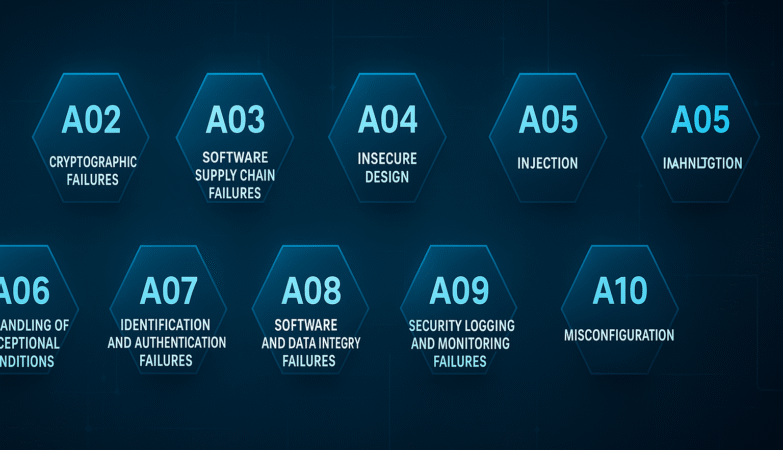Web applications are everywhere—so are the attackers targeting them. Whether you’re a web developer, ethical hacker, or just getting started with cybersecurity, understanding common web vulnerabilities is essential.
Here’s a beginner-friendly breakdown of the top 10 web vulnerabilities, how they work, and how to defend against them—based on insights from the OWASP Top 10.
🔟 1. SQL Injection (SQLi)
- What it is: Injecting malicious SQL queries into input fields.
- Example:
' OR 1=1 -- - Defense: Use prepared statements (e.g., PDO in PHP, parameterized queries in Python).
- 📌 Related: Read our blog on Wazuh for log monitoring to detect SQLi attempts in logs.
- 🧪 Practice Lab: SQL Injection vulnerability in WHERE clause
9️⃣ Cross-Site Scripting (XSS)
- What it is: Injecting malicious scripts into web pages.
- Types: Stored, Reflected, DOM-based.
- Defense: Sanitize user input, use Content Security Policy (CSP).
- 🧪 Practice Lab: Reflected XSS vulnerability
8️⃣ Cross-Site Request Forgery (CSRF)
- What it is: Tricking users into performing actions they didn’t intend.
- Defense: Use CSRF tokens, SameSite cookies, and double-submit techniques.
- 🧪 Practice Lab: CSRF vulnerability with token validation
7️⃣ Insecure Direct Object Reference (IDOR)
- What it is: Accessing unauthorized data by modifying object references in URLs.
- Example:
/profile/1234 → /profile/1235 - Defense: Implement proper authorization checks on the backend.
- 📎 Learn more in our blog on Threat Intelligence for detecting access abuse.
- 🧪 Practice Lab: IDOR vulnerability
6️⃣ Security Misconfigurations
- Examples: Default credentials, open S3 buckets, verbose error messages.
- Defense: Harden configurations, run security audits using tools like Mozilla Observatory.
- 🧪 Practice Lab: Exploiting verbose error messages
5️⃣ Broken Authentication
- What it is: Poor session management, weak password policies.
- Defense: Use multi-factor authentication (MFA), secure cookies, and session timeouts.
- 🧪 Practice Lab: Broken brute-force protection
4️⃣ Sensitive Data Exposure
- What it is: Storing passwords in plaintext, weak encryption practices.
- Defense: Always use HTTPS, and encrypt sensitive data at rest and in transit with AES or RSA.
- 🧪 Practice Lab: Exploiting misconfigured SSL
3️⃣ Broken Access Control
- What it is: Users accessing unauthorized functions or data.
- Defense: Enforce role-based access control (RBAC) and test access boundaries using Burp Suite.
- 🧪 Practice Lab: Access control vulnerability allowing horizontal privilege escalation
2️⃣ Unvalidated Redirects and Forwards
- What it is: Redirecting users to malicious sites through vulnerable URLs.
- Defense: Avoid using user input in redirect logic and whitelist URLs.
- 🧪 Practice Lab: Open redirection vulnerability
1️⃣ Using Vulnerable Components
- What it is: Outdated libraries and plugins.
- Defense: Use OWASP Dependency-Check or
npm auditto monitor and update components.
💡 Bonus Tip
New to bug bounties? Start with HackerOne’s Vulnerability Disclosure Program to practice responsible disclosure.
🔗 Internal Links Recap:
🚀 Conclusion
Understanding these vulnerabilities helps you build stronger, more secure web applications. Cybersecurity starts with awareness—so keep learning and testing your knowledge.










